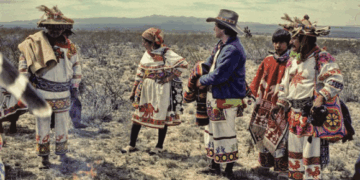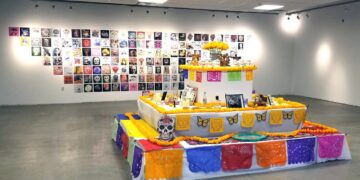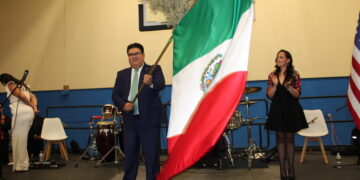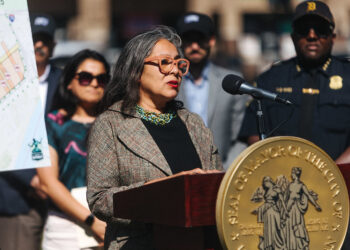El Salvador is one of the seven Central American countries known for its spectacular natural beauty. Its most important agricultural products are coffee, cotton, and sugarcane. The territory of El Salvador was inhabited by the Mayan people until the 11th century AD, then by the Nahuatl people, until the arrival of Europeans with the founding of the colonies.
In the 19th century, with the independence movements from Spain, the Federal Republic of Central America was formed in 1824, serving as one of the five states. However, conflicts with Guatemalan centralism led to a new uprising in 1841 that led to the emancipation of the Central American confederation. Since then, Salvadoran citizens have advocated for the defense of their territory and identity despite the difficulties in terms of governance.
Legend of the Guanacaste Tree
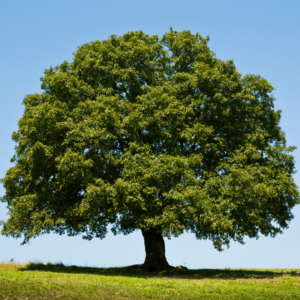
They say that many years ago, in a Chorotega village, there was a man who caused a lot of trouble. This man loved to listen to and tell other people’s stories. The townspeople had many problems with each other because he told stories that seemed like the truth, but weren’t true. This man was so anxious, so interested in learning the details of others’ lives to spread them, that he would wander through the streets and hide in the shadows, trees, and bushes to listen.
The townspeople realized that his behavior was a problem for everyone and took care to ensure he didn’t overhear them, but he made an effort to listen, hiding so they wouldn’t see him. Then he would go to the central plaza and meet with others who also liked to spread stories.
The townspeople began to have disagreements among themselves, causing more and more unnecessary problems because of the rumors the man and his friends from the plaza had spread.
Worried, the townspeople went to the Gods to ask for help getting rid of that talkative man. Day after day they prayed to the Gods, but the man and his friends continued telling stories. One day, out of nowhere, the man disappeared, although he caused them uncertainty; the talkative man had already caused them many problems.
One afternoon, while some townspeople were strolling through the plaza, they found a tree sprouting in the center, right where the man met with the other lords. The tree grew rapidly, growing larger and larger overnight.
One morning, at dawn, they found the Guanacaste tree with flowers and, days later, with fruit. When they looked at the fruit, they realized it looked like ears, understanding that the Gods had taken over and that man could now only listen, unable to tell or invent any stories.
In Mexico, the Guanacaste tree is called Parota and grows in areas with a humid and warm climate, near the coast. Its wood is used to make fine furniture due to its texture and color, as well as its great strength.
Joya de Cerén

Joya de Cerén is one of the most important archaeological sites in El Salvador. It is located on the Volcano Route in the Zapotitlán Valley, in the municipality of San Juan Opico, department of La Libertad.
Joya de Cerén was a Mayan village buried by a volcanic eruption around 640 AD. The catastrophe turned it into the best-preserved archaeological site in the Americas.
Yuca Tangles Recipe
Ingredients:
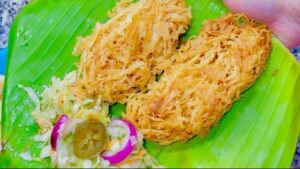
- 1 pound of fresh yuca (depending on the size of the yuca)
- 2 cups of oil
- 1 teaspoon of baking powder
- Salt and pepper to taste
Preparation
- Peel the yuca and wash it to remove any excess milk. Then grate it with the coarse side of a grater.
- Add the baking powder, salt, and pepper. Mix all of these ingredients very well.
- Form several small balls with your hand and then shape them into ovals.
- Heat the oil for several minutes, until very hot. Place the entanglements in the oil and let them brown. When they’re cooked through, remove them from the oil, pat them dry with a paper towel, and serve them hot.
- They can be served with salsa and curtido, or however you prefer.
El Salvador es uno de los siete países centroamericanos conocido por sus espectaculares bellezas naturales. Sus productos agrícolas más importantes son el Café, el Algodón y la Caña de Azúcar. El territorio de El Salvador ha sido habitado por pueblos mayas hasta el siglo XI de nuestra era, luego los pueblos nahuas, hasta la llegada de los europeos con la fundación de las colonias.
En el siglo XIX con los movimientos independentistas de España, se conformó la República Federal de Centro América en 1824 en la que fungió como uno de los cinco estados. Sin embargo, los conflictos con el centralismo guatemalteco impulsaron en 1841 a un nuevo levantamiento que propició la emancipación de la confederación centroamericana, desde entonces, los ciudadanos salvadoreños han apelado en defensa de su territorio e identidad pese a las dificultades en términos de gobernanza.
Leyenda del árbol de Guanacaste

Cuentan que hace muchos años, en un pueblo Chorotega, había un hombre que causaba muchos problemas. A este hombre le gustaba mucho escuchar y contar las historias de los demás. Los pobladores tenían muchos problemas entre sí porque él contaba algo que se parecía a la verdad, pero no era verdad. Este hombre estaba tan ansioso, tan interesado en enterarse de los detalles de las vidas de los demás para divulgarlas que se iba por las calles y se escondía entre las sombras, árboles y arbustos para escuchar.
Los pobladores se dieron cuenta que su conducta era un problema para todos y se cuidaban que no los escuchara, pero él se esforzaba en escuchar escondiéndose para que no lo vieran, luego se iba a la plaza central y ahí se reunía con otros a los que también les gustaba esparcir historias.
Los pobladores comenzaron a tener desacuerdos entre ellos, cada vez más problemas innecesarios por culpa de los rumores del hombre y sus amigos de la plaza.
Preocupados los pobladores fueron a los Dioses a pedir que les ayudaran a librarse de aquel lenguaraz. Día con día le pedían a los Dioses, pero el hombre y sus amigos seguían contando historias.
Un día, así, de la nada, el hombre desapareció, aunque les causó incertidumbre, el lenguaraz ya les había dado muchos inconvenientes.
Una tarde, mientras paseaban unos pobladores por la plaza, se encontraron al centro, justo donde se reunía el hombre con los otros señores, empezó a brotar un árbol. El árbol crecía de manera acelerada, de la noche a la mañana estaba cada vez más grande.
Un mañana, al amanecer encontraron al árbol de Guanacaste con flores y a los días, con frutos. Al mirar los frutos se dieron cuenta que parecían orejas, entendiendo así que los Dioses se habían hecho cargo y el hombre ahora sólo podría escuchar sin poder contar, ni inventar ninguna historia.
En México, al árbol de Guanacaste, se le llama Parota y crece en las zonas de clima húmedo y cálido, cerca de la costa. Su madera es utilizada para hacer muebles finos por la textura y colores de su madera, así como su gran resistencia.
Joya de Cerén

La Joya de Cerén es uno de los sitios arqueológicos más importantes de El Salvador, se encuentra en la ruta de los volcanes en el valle de Zapotitlán, en el municipio de San Juan Opico, departamento de La Libertad.
La Joya de Cerén fue una aldea maya que quedó sepultada por una erupción volcánica alrededor del año 640 d. C., la catástrofe lo convirtió en el sitio arqueológico mejor conservado de América.
Receta Enredos de Yuca
Ingredientes:

- 1 libra de yuca fresca (eso depende del tamaño de la yuca)
- 2 tazas de aceite
- 1 cucharadita de polvo de hornear
- Sal y pimienta al gusto
Preparación
- Pela la yuca, lávala para que le quites el exceso de leche. Luego hay que rallarla con la parte gruesa del rallador.
- Agregue el polvo de hornear, la sal y la pimienta. Mezcla muy bien todos estos ingredientes.
- Forme varias bolitas con la mano y luego proporciónales una forma ovalada.
- Calienta el aceite durante varios minutos, hasta que esté bien caliente. Coloca en éste los enredos y déjelos dorar, cuando tengan el cocimiento adecuado retíralos del aceite, sécalos con papel toalla y sírvelos calientes.
- Se pueden acompañar de salsa y curtido, o como usted los prefiera servir.





